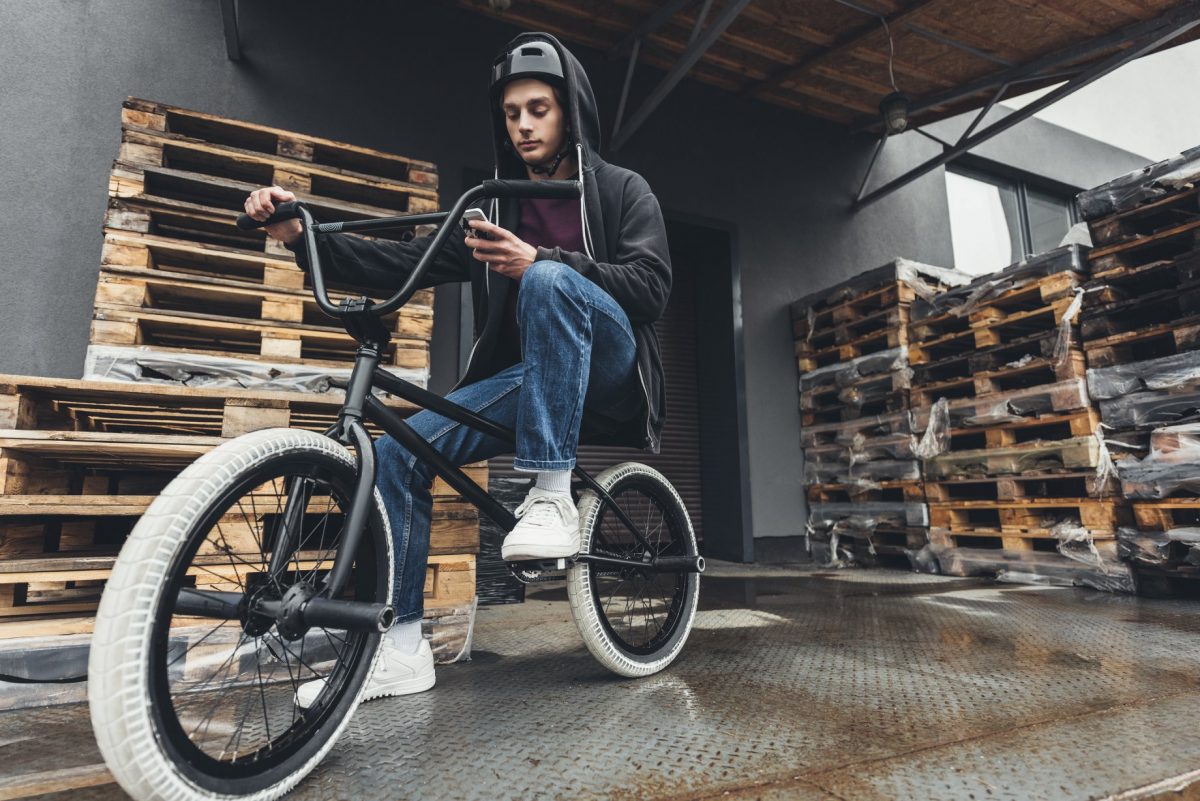
In this article we outline three important factors to consider before your BMX purchase. They include, what are BMX bikes – broken down for the layman. The difference between the types of BMX bikes for sale – including Park-style, Dirt-style, Flatland, and Racing style BMX bikes – and lastly, we provide our top three suggestions for the best BMX bikes for sale on the Bike Chaser platform.
BMX Bikes for Sale on Bike Chaser
What is a BMX Bike?
With origins dating back to 1970s, BMX bikes were initially intended for BMX (Bicycle Motocross) racing and have many things in common with petrol-powered bikes (sprint-style races on paved and dirt tracks). Since then these bikes have evolved into off-road sport bicycles for stunt riding and other forms of racing. BMX bikes are now generally known as racing bikes used in various racing disciplines, including BMX freestyle, dirt, park, street and flatland.
Designed to handle stress associated with performing street stunts, skate parks and dirt jumps, freestyle BMX bikes are made using materials optimized for better manoeuvrability and strength. Racing BMX bikes on the other hand are optimized for acceleration and speed and use lighter materials. While frames of entry-level and racing BMX bicycles are made out of Chromoly 4130, the higher-end racing models come with aluminum (lightweight) or carbon frames (vibration dampening).
The use of cassette hubs popularized BMX bikes due to smaller gearing. New BMX bikes use gearing such as 36/13, 30/11 and 23/8, which is quite small than 44/16 gearing used on older BMX bikes. Almost all new BMX bikes have similar gearing ratios of 2:8:1, making them more lightweight and providing better clearance when grinding.
BMX Model Types
BMX bikes can be categorised by model types into five main categories. Some categories are known by different names e.g. trails/dirt bikes or vert/park-style bikes, but they mean the same thing.
Park-style BMX Bikes
The primary emphasis of park-style BMX bikes aka vert bikes/skaters is to remove unnecessary weight. This is accomplished by reducing structural stress on different areas of the bike, making it more suitable for riding in skate parks. Many even prefer not to install brakes to further reduce the weight.
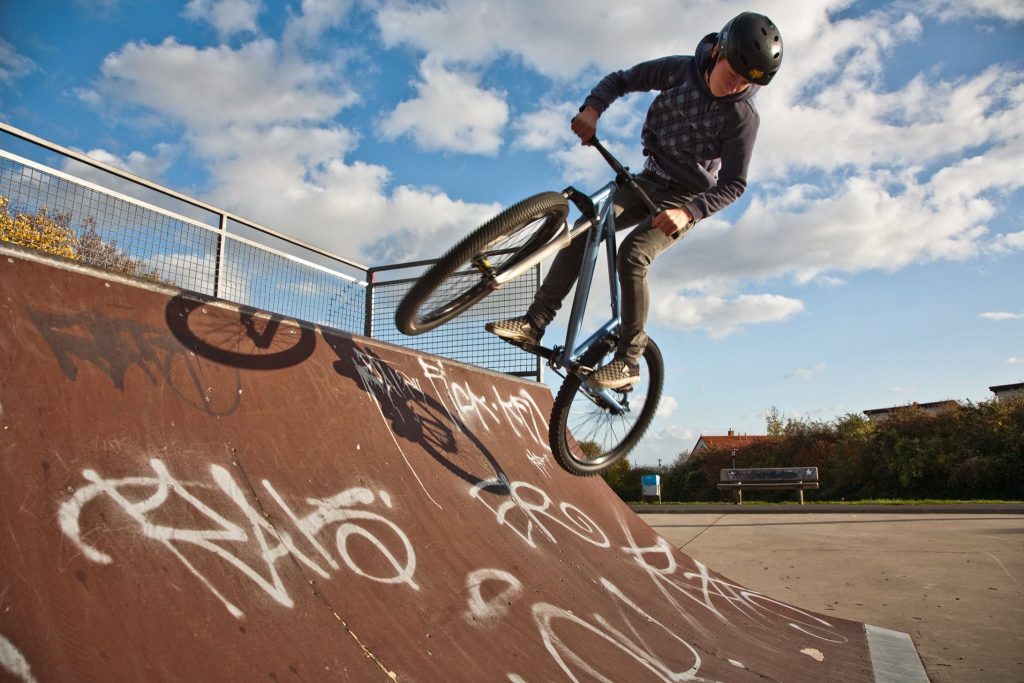
Dirt-style BMX Bikes
Tires with thicker threads differentiate dirt-style BMX bikes from park-style bikes otherwise both are quite similar. Thicker threads offer better grip, making dirt-style bikes better suitable for loose surfaces, berms and dirt jumps.
Flatland-style BMX Bikes
Flatland bikes incorporate various geometrical principles to park-style bikes for more precise balance, which is required in flatland racing. Flatland riding is a niche style and is also referred to as breakdancing (riders balance and pivot their bikes on flat and hard surfaces).
Racing-style BMX Bikes
These bikes come with a larger front sprocket for a higher gear ratio, allowing riders to achieve higher speeds than other BMX bikes. These bikes are also required to have brakes due to higher speed and gear ratio. Racing-style bikes are not suitable for other styles as they are designed keeping hard-packed dirt/bitumen tracks in mind.
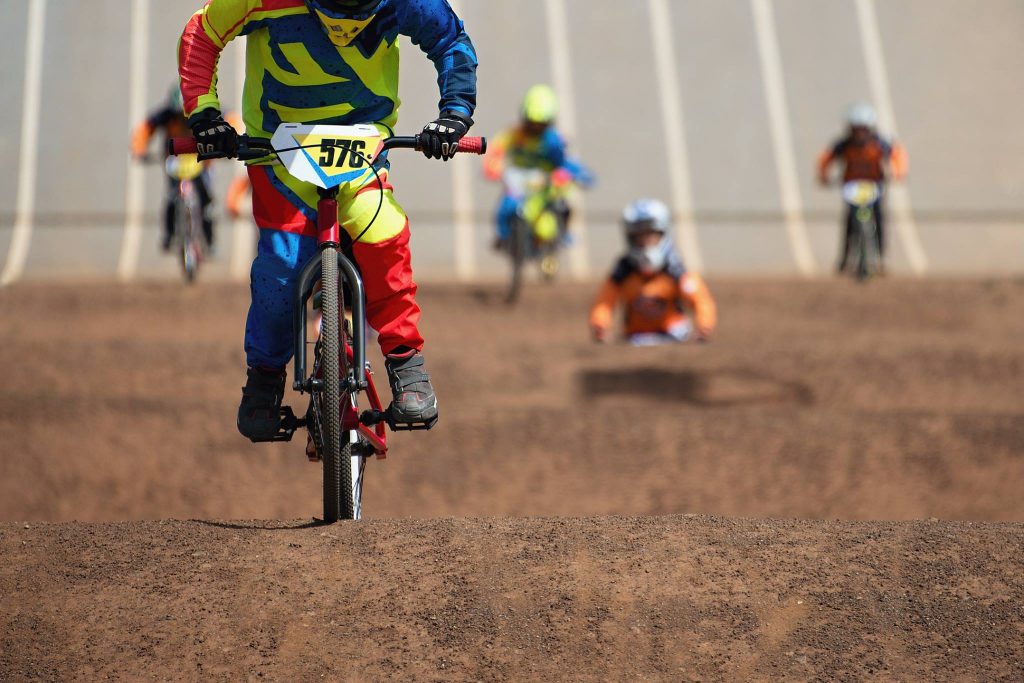
Street-style BMX Bikes
These bikes mostly have metal pegs that are attached to axles, enabling riders to rail-grind. Street-style bikes are also stronger and heavier than other models of BMX bikes. That’s because they have to tolerate extra strain from flat and hard surfaces associated with street riding.
These bikes are designed to enable riders to perform skilled tricks and turns and usually don’t have any brakes (so the brake cables don’t get in the way while riders are spinning the bard). Street-style riders have to use their feet to slow down or stop the bike (against back tire’s top).
Our Picks for Top 3 BMX Bikes
With so many choices available, it often becomes difficult to choose the right kind of BMX bike. That’s why we have only included the three most popular categories i.e. freestyle, race and street. Let’s have a look at our top pick from each category.
Haro Dave Mirra Tribute Freestyle BMX Bike
Constructed using 100 percent chromoly Mirra Tribute frame, this bike was produced in limited numbers, which justifies the high demand. It was created to honour Dave Mirra, with a large amount of sales proceedings going to his family. It’s one of the most sought after freestyle bikes and is essentially a collectors bike.
Shop for the Haro Dave Mirra Tribute on Bike Chaser here
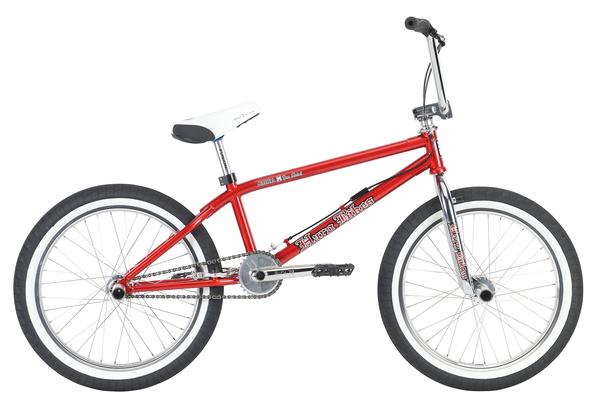
PRICE: $1,299.00
Key Features and Specs
- 100 percent chromoly Mirra Tribute Frame
- 100 percent chromoly fork
- Integrated head tube and 8.75-inch bars
- Fully-sealed wheels
- 5/21 inch top tube length
- Padded Pivotal seat
- 990 rear brakes /w Tech-77 lever
- Haro 1978 plastic pedals
- Haro Team grips
2019 GT Speed Series Pro Racing BMX Bike
Quick-change dropouts and a race-ready geometry makes this racing BMX bike a great option for racing enthusiasts and prepares them for almost any condition. Designed for acceleration, the stiff and lightweight frame transforms every pedal rotation into momentum. The 6 pawl 72-point engagement of the rear hub ensures instant power transfer for racing, while Promax hydraulic disk-brakes (rear) provide the control racers need. The quick-change disc dropout system allows easily switching wheels according to different track conditions.
Shop of the GT Speed Series on Bike Chaser here
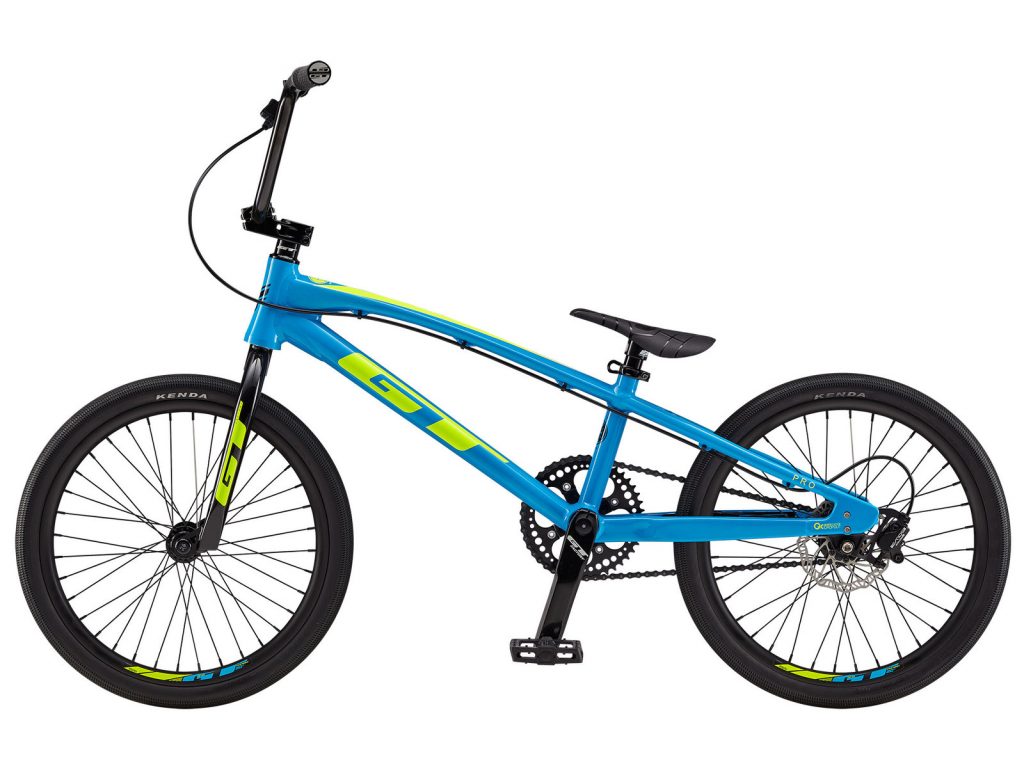
PRICE: $1,499.00
Key features and Specs
- GT Speed Series MK7 Elite frame (6061-T6 Alloy)
- AL CNC/Forged quick-change disc dropout system
- GT BMX Pro Race forks, 20mm dropouts
- 100 percent CrMo steerer
- 8×1.2mm tapered blades
- GT Speed Cr-Mo handlebars, 29-inch width
- GT Statement Double Lock-on Grips
- GT Forged Alloy 2-piece cranks
- BB86 sealed bearings
- Promax hydraulic disc brake
- 20mm AL thru axle
- 6 pawl, 72-point alloy rear hub
- 36h Speed Series rims (double wall)
- 14g Stainless Steel Spokes
- 20 x 1.75” Kenda Kompact Pro Race tires
- GT Low Profile FS pedals
FLY BIKE ELECTRON 20′ BMX BIKE
This street BMX bike is designed for streets and local parks due to its lightweight design and a powerful drivetrain. Equipped with Trebol 2.35-inch tires and top tube length of 20.5-inches, Electron is designed to create a sweet ride without breaking the bank. It’s ready for a variety of conditions, including tracks and trails, thanks to compact geometry and a low standover-height.
Shop for Fly Bike’s Electon on Bike Chaser here
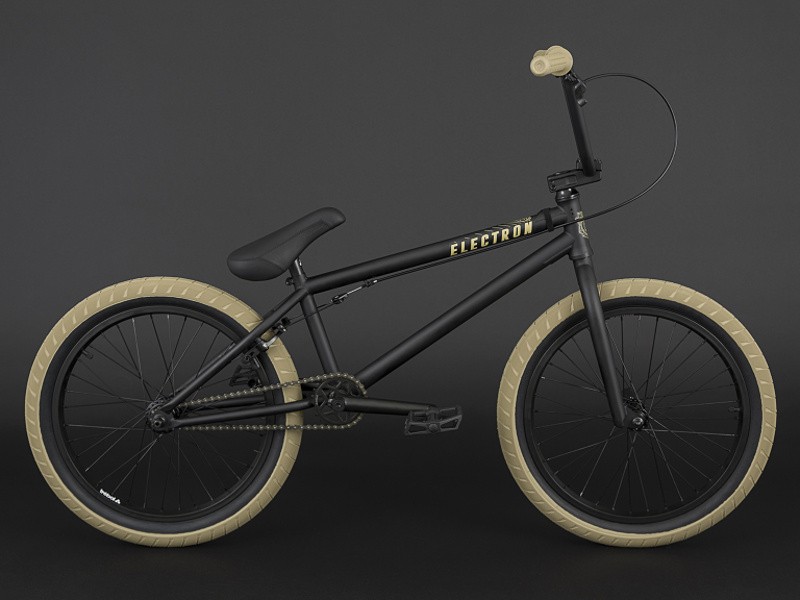
PRICE: $799.00
Key features and Specs
- 4130 Chromoly frame and forks (25mm offset)
- Trebol sealed front (10mm) and rear (14mm) hub
- 4130 Chromoly handle bars (8.25″x28″)
- Flybikes Ruben grips
- Trebol top-load stem
- Trebol crankset
- Chromoly Trebol 25t 4130 sprocket
- Trebol double-wall rims (36H AL-6061-T6)
- Flybikes Ruben Rampera tires
- Dos 5 seat, Tripod seatpost
- Ruben graphite pedals
- Manual brake and lever
- Weight approximately 25 Lbs.
- 1020 HiTen Legs
- Trebol HS Steel pegs
- Forged & CNC Machined post




